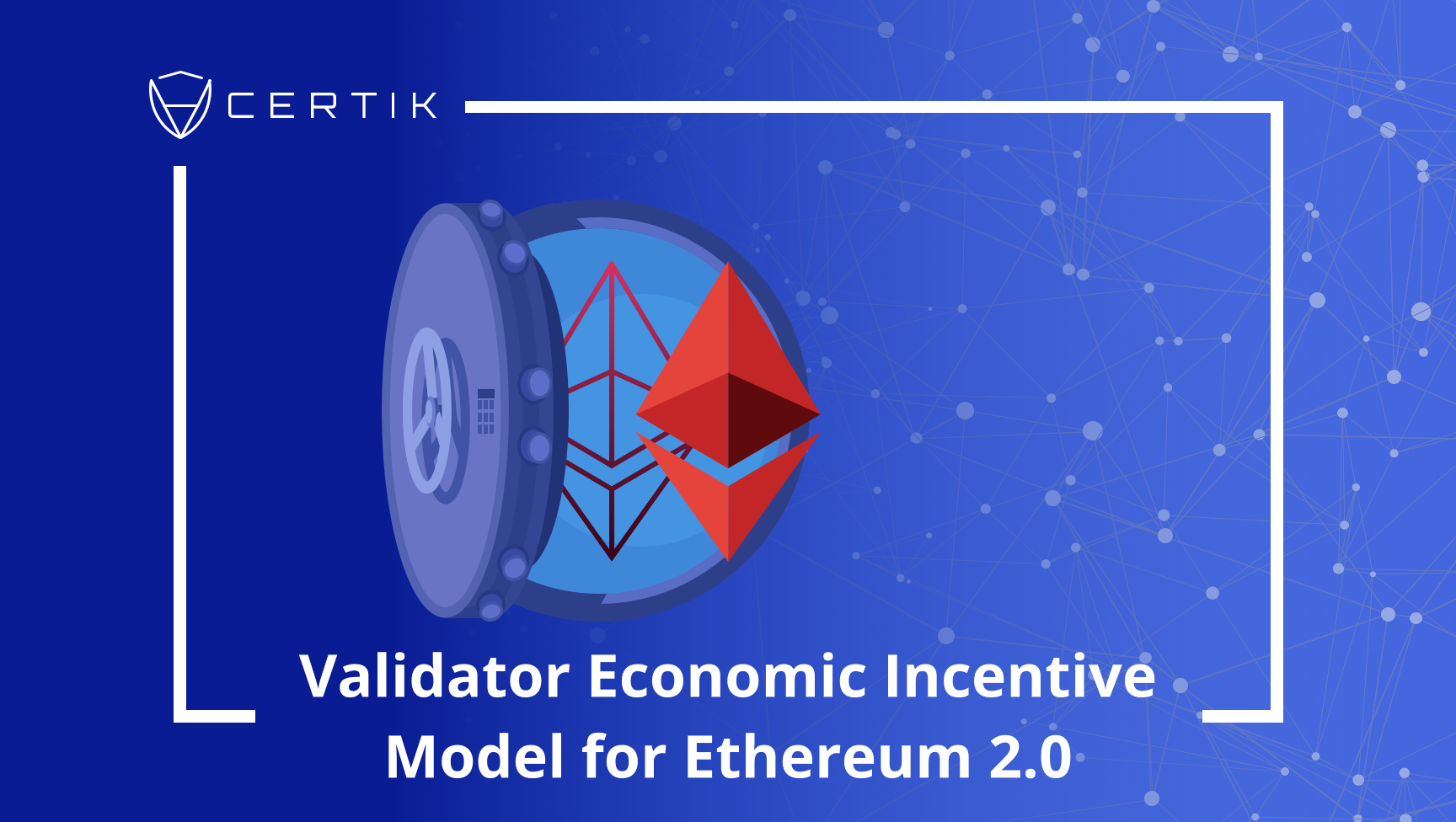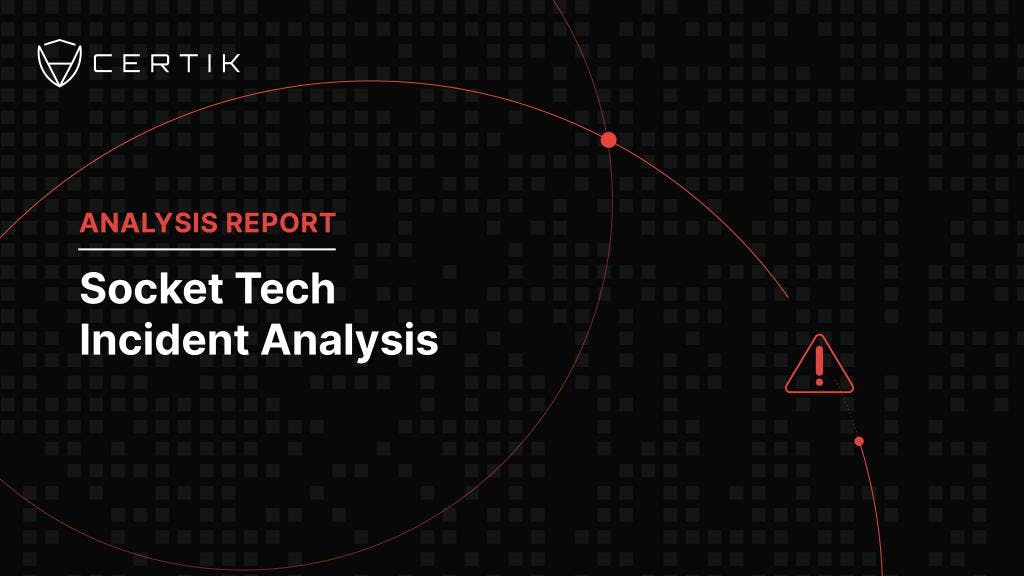
Phase zero of Ethereum 2.0 is expected to launch during the second or third quarter of 2020. It’s the first transitional stage of Ethereum network from Proof of Work (PoW) to Proof of Stake (PoS), which will pass block validation function from miners to validators.
A rational validator has a decreased chance of participation if the opportunity exhibits weak profitability. Based on the data/evidence gathered and assumptions made, we’ll elaborate on the following economic incentive model with the motivation of exploring the future profitability of Ethereum 2.0.
For reference, we’ll use this formula as a foundation:
*Economic Incentive Model = Validator Rewards + Network Fees + Gain/(Loss) From Ethereum Price Changes – Costs To Be A Validator*
Data Gathered and Assumptions Made
Before describing the incentive model, we’ll describe our assumptions and data that led us to our calculations and conclusions.
Data/Evidence:
- The annual reward return rate of Ethereum is approximately 3.20%.
- The target staking amount of Ethereum is 32 million.
- Currently, network fees are about 600 ETH per day.
- Currently, the interest rate of a four-week treasury bill is 1.53%.
Assumptions:
- There is no inactivity leak, which means more than two-thirds of the validators are online all time long.
- The hardware cost is $600 and has a useful life of 10 years.
- The software cost is $0.
- Sharding does not necessarily affect rewards, network fees, gain/(loss) from Ethereum price change and costs that we’ve covered, because we target validators who stake 32 ETH for 18 hours.
- Since risks depend on validators’ risk preferences and are difficult to measure explicitly, we assume validators are 100% risk loving. Meaning, the conclusions do not consider the cost of these risks.
Some beforehand clarifications:
- The time and amount that an Ethereum validator chooses to stake varies by individual. Because the minimum amount for staking is 32 ETH and the minimum lock up time is 18 hours, we typically evaluate the profitability of a validator who stakes 32 ETH for 18 hours.
- We use $130.60 as the price of Ethereum at period t-18 in the analysis because the opening price of Ethereum on Jan 1st 2020 is $130.60.
- Apart from the major costs we’ve covered in the following analysis, we do not consider any other miscellaneous costs for a simpler scenario.
Definitions:
- Validator Rewards: rewards that a validator earns when he/she successfully proposes and attests blocks.
- Staking: a process of holding funds in a cryptocurrency wallet to support the operations of a blockchain network.
- Network / Transaction Fees: fees that people pay to use the network. In Ethereum 1.0, transaction and network fees are also known as gas fees. A certain portion of Network Fees are earned by validators, while the rest are burned as gas.
- Sharding: a way of partitioning larger chains into smaller and faster ones, hence making the entire system more scalable. It should be noted that sharding may affect profitability owing to the fact that the validator requires additional hardware and software cost if he/she stakes more.
- Lockup Time: the set amount of time validators must wait to get their Ethereum back. The minimum lockup time is 18 hours.
Validator Rewards
A validator who participates in Ethereum 2.0 will receive rewards when blocks are successfully proposed and attested for. As estimated by Justin Drake, researcher at the Ethereum Foundation, the Annual Reward Return Rate is approximately 3.2% and the target Staking Amount of Ethereum is around 32 million.
Based on this evidence, we convert the Annual Reward Return Rate to be 18-hour Reward Return Rate.
- 18-hour Reward Return Rate = (3.2%/365) (18/24)= 0.006575342%*
In the next part, we’ll need the Staking Amount of Ethereum to calculate the Network Fees for a validator who stakes 32 ETH for 18 hours.
Network Fees
Validators earn a cut of the transaction fees that people pay to use the network. During phase zero, all user transactions will still occur on Ethereum 1.0 chain as indicated in EthHub.
Currently, the whole Ethereum network is paying about 600 ETH per day, as mentioned in EthHub. Because we know the whole Staking Amount is 32 million, we can calculate the Network Fees for a validator who stakes 32 ETH for 18 hours as below.
- Network Fees = 450 * 80% * (32/32,000,000)= 0.00045 ETH
Gain/(Loss) From Ethereum Price Changes
Ethereum price changes will affect a validator’s profit. Gains will arise when the selling Ethereum price exceeds its purchase price, and vice versa.
We will use the 2019 Ethereum price over an 18-hour period from Binance to evaluate the gain/(loss) from the price change in the final analysis part.
Costs To Be A Validator
- Hardware Cost
Though the PoS system does not require large quantities of electricity – serving as a major benefit–the hardware cost is still TBD according to* EthHub*. We consider that a validator is required to have a computer, assuming that the price of a computer is $600, and that the computer has a useful life of 10 years. So, the cost for depreciation of 18-hour period is $0.12.
(600/(10*365) * (18/24)= $0.1232877
- Software Cost
In regards to the software cost, validators need to set up a node, download the Ethereum blockchain software – which is over 20 GB in size – and connect the node to the network. Under the condition that a validator only stakes 32 ETH for 18 hours, we assume no explicit costs for software since it only requires sufficient space of the hardware and network connection.
- Capital Acquisition
A minimum of 32 ETH are required to be staked in order to become a validator.
- Gas Burned
The majority of transaction fees on the network will be burned, while the rest will be given to the validator. We assume that the gas burned will account for 80% of the total transaction fees. Therefore, 0.00036 ETH is burned every 18 hours for a validator who stakes 32 ETH based on the whole Ethereum network paying about 600 ETH per day.
450 * 80% * (32/32,000,000) = 0.00036 ETH
- Lockup Time (Opportunity Cost)
The minimum lockup time is 18 hours. When locked, validators lose the opportunity to invest in other assets (e.g: treasury bills, or riskless investments in global financial markets).
We quantify the opportunity cost by calculating the reward validators could have obtained from the US treasury bill. Currently, the interest rate of a four-week treasury bill is 1.53%. Thus, the interest rate of the 18-hour treasury bill is 0.003%. The opportunity cost is:
1.53% ÷ 365 days ÷ 24 hours * 18 hours = 0.003143836%
0.003143836% * Staking Value Of The Validator ($)
- Security Risk
There is currently no way to recover funds if a validator is hacked due to a security failure leading to forced downtime and/or misbehavior.
- Code Risk
Poor code can be dangerous, especially since Ethereum is open-source. Different programmers can contribute to a project, making it difficult to develop code with consistent designs and qualities.
Analysis and Profits
Now it’s time for us to move to the exciting part: Validator Profits.
N denotes the amount of ETH a validator stakes, and P(ETH,t) and P(ETH,t-18) denote the price of Ethereum at period t and period t-18 respectively.
After several rearrangements, we get the following equation:

As we can see,Profit depends on the price of Ethereum the time a validator stakes and withdraws if he/she stakes 32 ETH for 18 hours.
Let’s assume, a validator stakes 32 ETH at period t-18 with the price of $130.60.

The above analysis shows that, as long as the price does not fall below $130.59 when the validator withdraws Ethereum, the validator will make profits on the condition that he/she stakes 32 ETH for 18 hours and the beginning price is $130.60.
Therefore, if the price drops by 0.00077% in 18 hour period (approximately 0.37% annually), the validator can still make a profit when he/she stakes 32 ETH.
Additional Analysis
Phase zero of Ethereum 2.0 is more of an exploration stage rather than an actual execution. The lack of deeper insights are due to the lack of further well-built explanations with concrete data and evidence.
However, phase zero is the beginning of the PoS algorithm--a major advantage for the network. And because Ethereum’s logic does not significantly change, we can possibly use real data from 2019 to estimate the rough picture of profitability in the coming future.
We collected data of Ethereum’s price every 18 hours from Binance, and validator rewards, network fees, and costs to produce a profit chart of a validator who stakes 32 ETH for 18 hours.
As shown above, profits are almost evenly distributed around the breakeven line. Validators are not incentivized to participate in the beginning of Ethereum 2.0 due to the fact there is no absolute tendency that one can make profit, with the assumption that 32 ETH is staked and the Ethereum price in year 2020 does not significantly change from year 2019.
Conclusion
From our perspective, in transition from PoW to PoS, most people tend to wait after phase zero has launched in order to get more information and then make a decision whether to join or not. Ethereum 2.0's future prospect is promising.



